Reflected Crepuscular Rays
Reflected Crepuscular Rays: A Phenomenon of Light and Reflection
Crepuscular rays, also known as sunbeams, are a mesmerizing atmospheric optical phenomenon that occurs when sunlight is scattered by particles in the atmosphere. These rays appear to radiate from the position of the sun, creating beautiful patterns of light and shadow in the sky. However, there is another captivating variation of crepuscular rays that often goes unnoticed – reflected crepuscular rays. In this article, we will explore the intriguing world of reflected crepuscular rays and delve into the details that make them unique.
Reflected crepuscular rays occur when sunlight is not only scattered by atmospheric particles but also reflected off a reflective surface such as water or glass. The reflected rays appear to originate from a point directly beneath the sun, mirroring the path of the sunbeams above. This optical illusion is a result of perspective, making the reflected rays seem to emerge from a point below the horizon, at the same distance as the sun is above it.
To witness this phenomenon, one needs calm and smooth water, acting as a giant mirror. When the surface of the water is undisturbed, it reflects the sun's rays upward, creating a stunning display of light. The reflected crepuscular rays can be observed as sharp beams, showcasing the stillness of the water. Interestingly, these rays often appear wider at their top due to perspective. Although parallel, they angle towards the observer, creating an illusion of convergence.
Unlike many other atmospheric optical effects that seem ethereal and intangible, reflected crepuscular rays possess a tangible and solid nature. They provide a unique three-dimensional experience that can be truly captivating. Imagine being able to fly around these rays or even walk amongst them in a sun-dappled forest glade – it's a surreal encounter with nature's artistry.
Photographer Daniel Linek has captured the beauty of reflected crepuscular rays in various locations. One such instance was at Northport Bay, Long Island, where Linek was photographing clouds. In this serene location, the water acted as a massive mirror, reflecting the sun's rays upward. The resulting images depict the striking geometry and depth of the reflected rays, showcasing their solid presence.
Another stunning capture by Linek was at Mascoma Lake, New Hampshire. In this instance, the misty air and shadowed foreground created a dramatic backdrop for the reflected crepuscular rays. As the sun shone on the opposite shore, its rays were reflected upwards, creating an enchanting spectacle. Linek's photographs allow us to appreciate the interplay between light, reflection, and the surrounding environment.
In conclusion, reflected crepuscular rays offer a fascinating twist to the already captivating world of atmospheric optics. These rays, created through the combination of sunlight, atmospheric particles, and reflective surfaces, provide a tangible and three-dimensional experience. Witnessing the convergence of these rays below the horizon is a reminder of the intricacies and wonders of nature. Whether captured through the lens of a camera or experienced firsthand, reflected crepuscular rays leave an indelible impression on those fortunate enough to observe them.
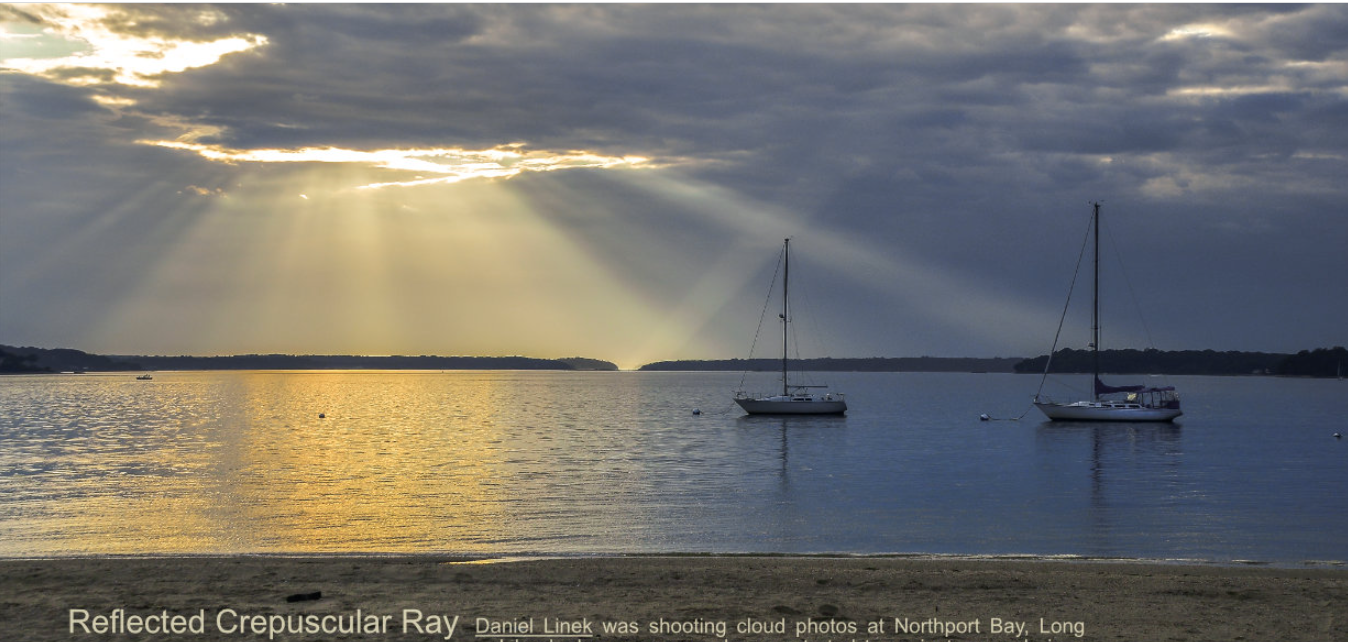
Reflected Crepuscular Ray Daniel Linek was shooting cloud photos at Northport Bay, Long
Island when a crepuscular ray started to project upwards in a different direction. More of his images below.
Water in a sheltered part of the bay, probably the cove at Lloyd Harbor ("X" lower left), acted
as a huge mirror reflecting the sun upwards.
To a distant observer the reflected ray appears by perspective to come from a point directly underneath the sun and at the same distance below the horizon as the sun is above.
Daniel's ray is sharp. That requires very still and smooth water.
Note how the reflected ray is wider at its top. Perspective is acting once more. The ray is
parallel but angled towards the camera.
Scenes like this, especially when experienced live, reveal the true 3D nature of crepuscular rays. Unlike most atmospheric optics effects, they are real and solid. You can fly around them. In a sun dappled forest glade you can even touch them, walk amongst them.
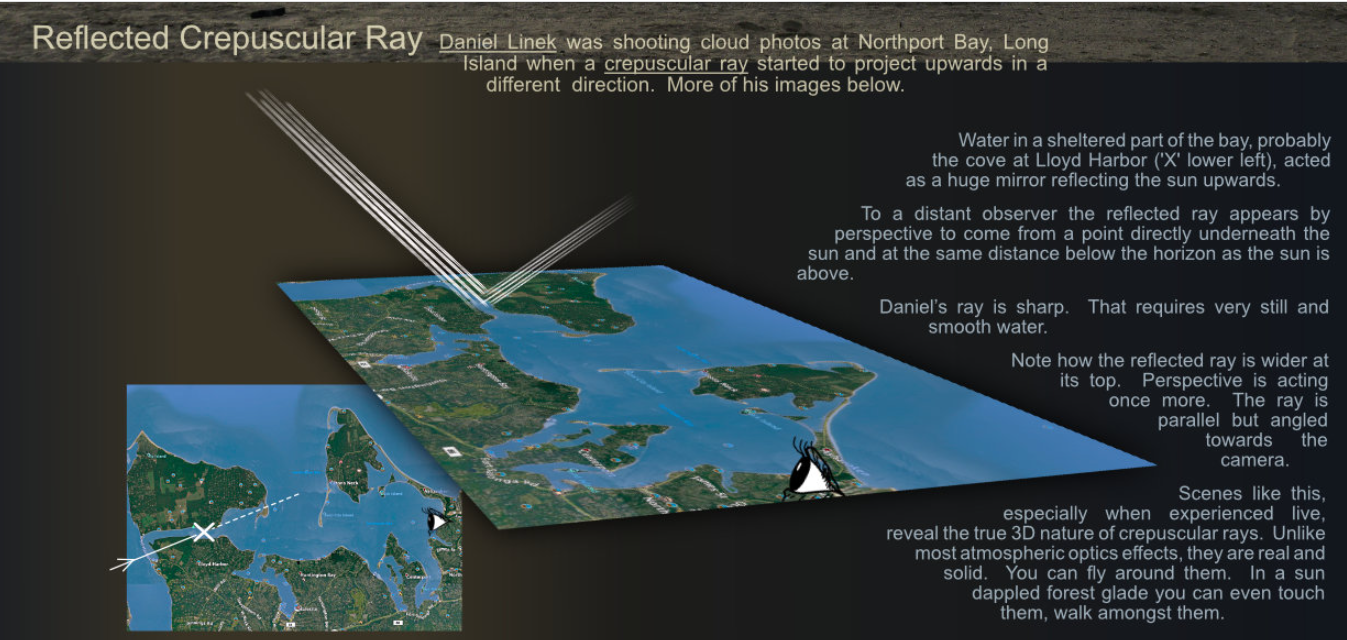
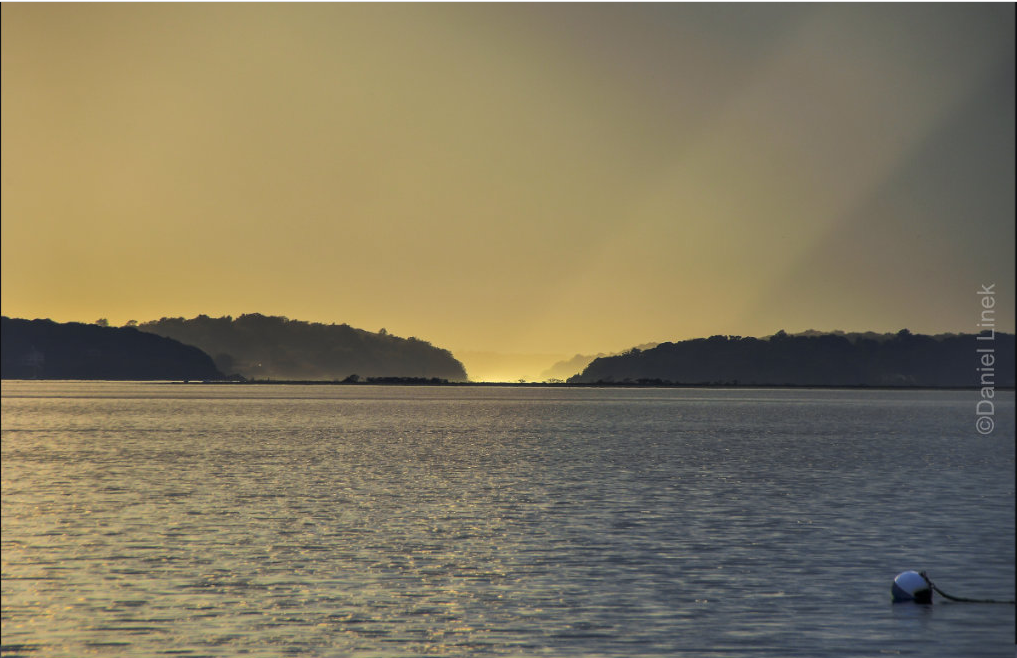
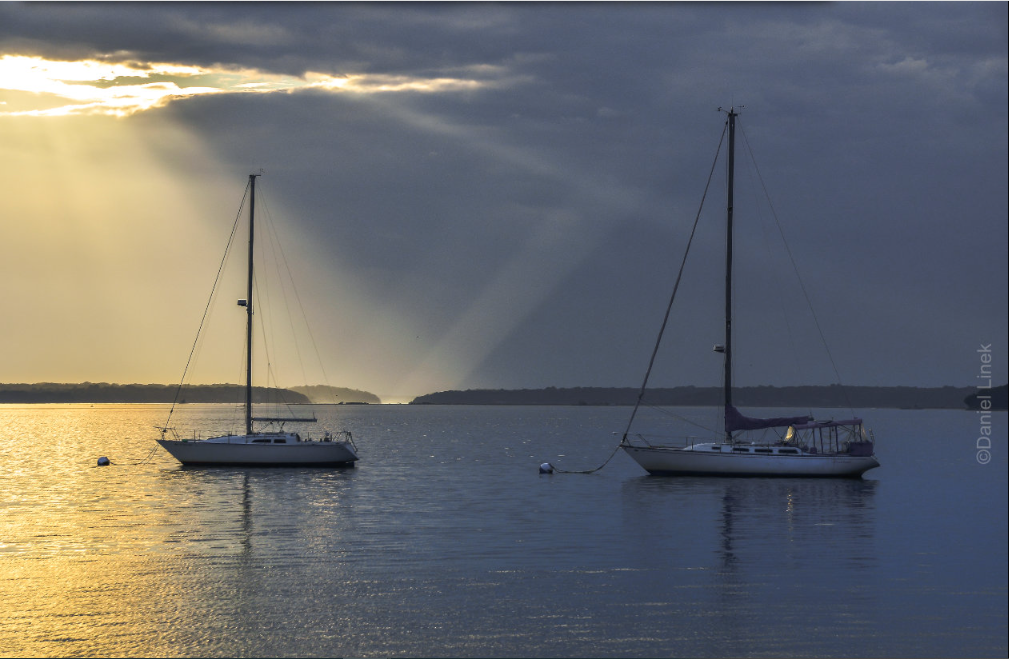
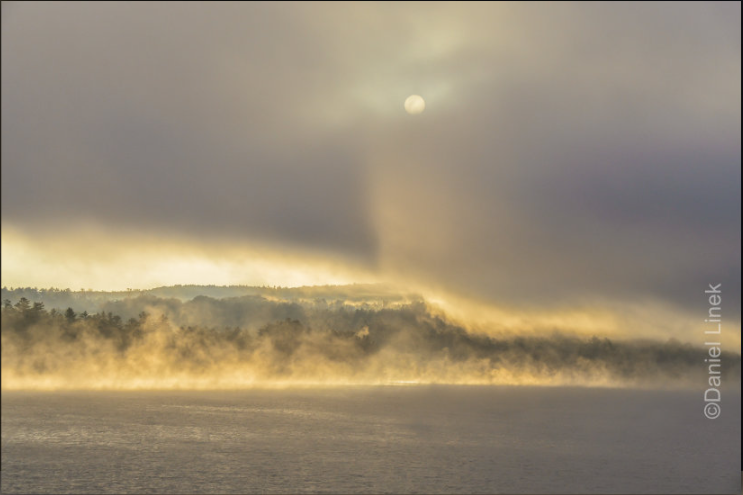
Daniel Linek captured more reflected rays at Mascoma Lake, New Hampshire.
The air was misty and the foreground in shadow. Near the opposite shore the sun shone and reflected a ray upwards.
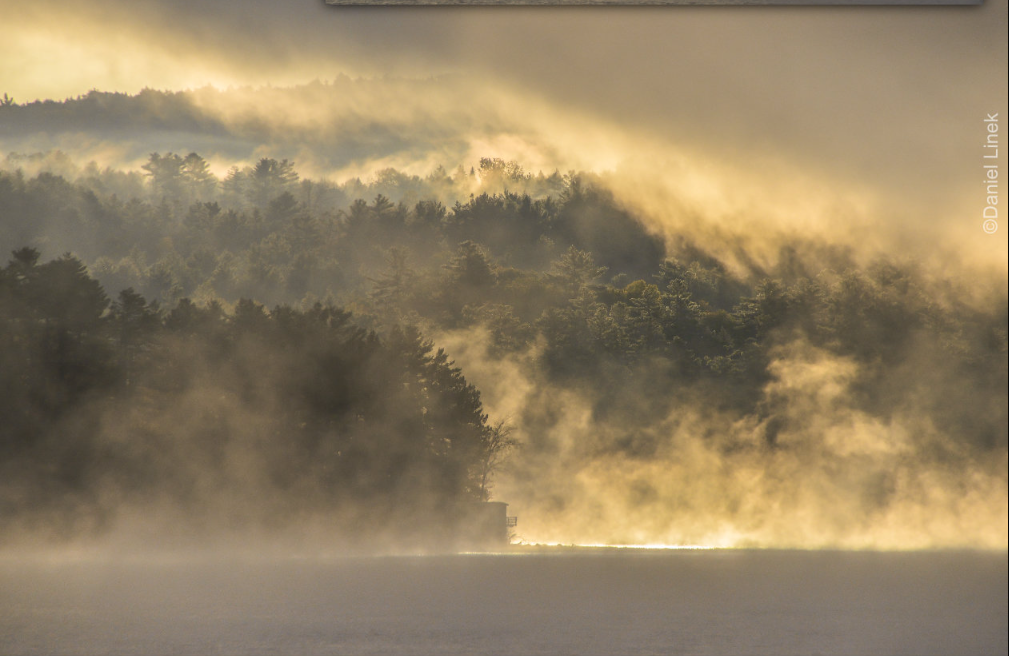
Note: this article has been automatically converted from the old site and may not appear as intended. You can find the original article here.
Reference Atmospheric Optics
If you use any of the definitions, information, or data presented on Atmospheric Optics, please copy the link or reference below to properly credit us as the reference source. Thank you!
-
<a href="https://atoptics.co.uk/blog/reflected-crepuscular-rays-3/">Reflected Crepuscular Rays </a>
-
"Reflected Crepuscular Rays ". Atmospheric Optics. Accessed on November 26, 2024. https://atoptics.co.uk/blog/reflected-crepuscular-rays-3/.
-
"Reflected Crepuscular Rays ". Atmospheric Optics, https://atoptics.co.uk/blog/reflected-crepuscular-rays-3/. Accessed 26 November, 2024
-
Reflected Crepuscular Rays . Atmospheric Optics. Retrieved from https://atoptics.co.uk/blog/reflected-crepuscular-rays-3/.